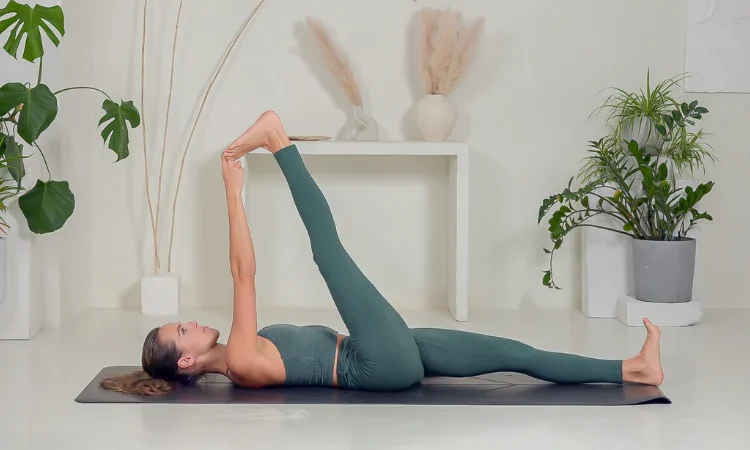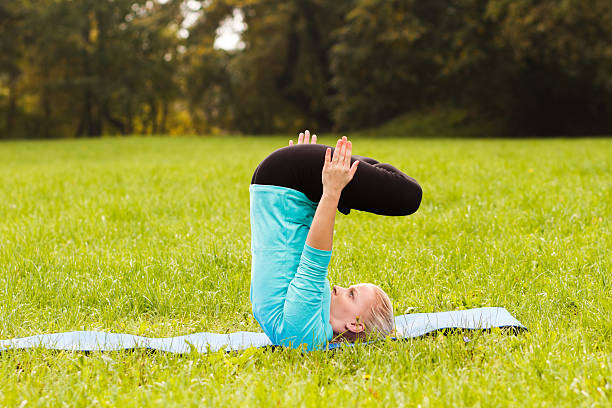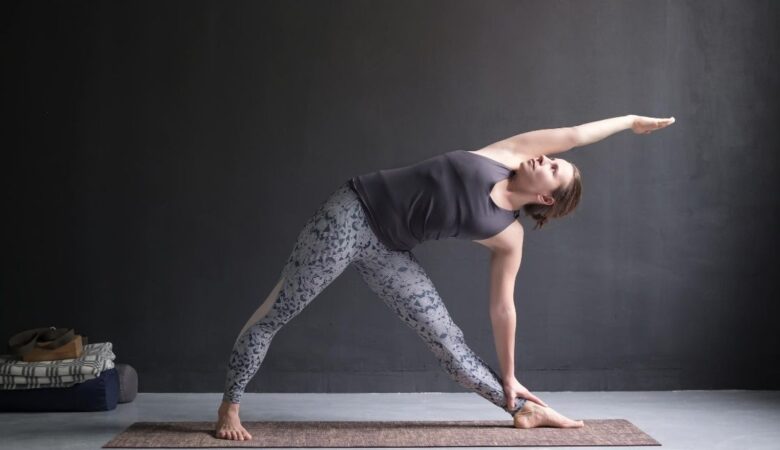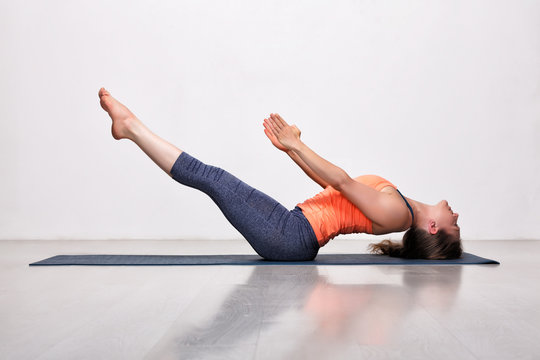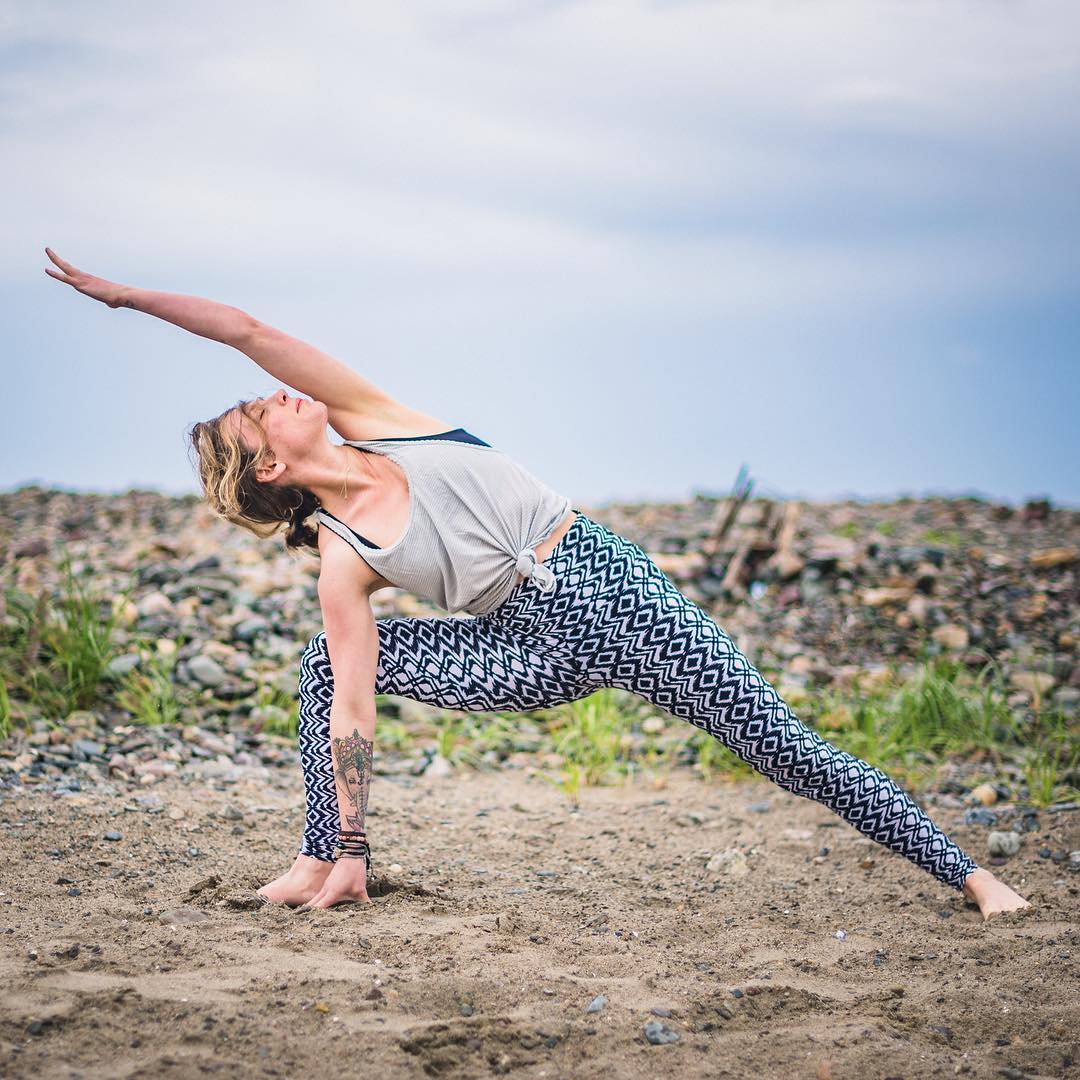
Sanskrit Name: Utthita Parsvakonasana (उत्थित पार्श्वकोणासन)
English Name: Extended Side Angle Pose
Type of Yoga: Hatha Yoga
Level of Yoga: Basic
Duration: As per your capability or 30 to 60 seconds
Target Area: Shoulders, Legs, Groin, Thorax, Vertebral column, Abdomen, Lungs, Knees and Ankles
Strengthens: Ankles, Legs, Knees
Do you want to lose extra fat from your chubby waist? Then you must try Utthita Parsvakonasana (Extended Side Angle Pose) since it is a wonderful yoga posture to help you reduce waist fat. In addition, it will tone your figure, balance and strengthen your shoulders, hamstrings, hips, spine, and chest. It also improves digestion and helps in relieving stress.
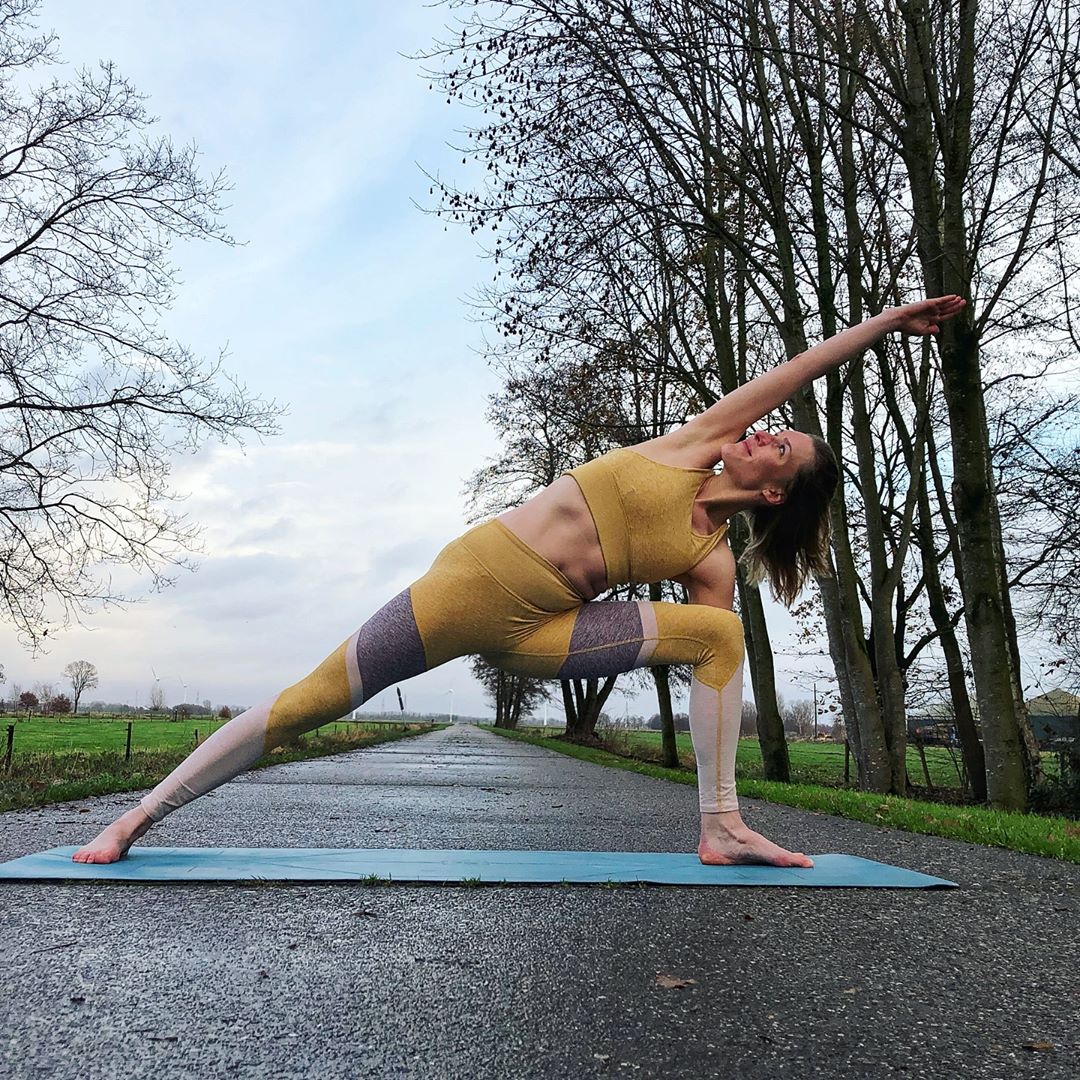
Table of Contents
What Does It Mean By Utthita Parsvakonasana (Extended Side Angle Pose)?
The name Utthita Parsvakonasana comes from the Sanskrit language
The First word is “Uthita (उत्थित)”, which means “extended”,
The Second Word is “Parsva (पार्श्व)”, which means “side”,
The third word is “Kona (कोणा)”, which means “angle”,
And the fourth word is “Asana (आसन)”, which means “yoga pose”
In this article, we are going to explain the ways and the benefits of doing the Utthita Parsvakonasana (Extended Side Angle Pose). Together, it has also been mentioned that be careful what to do during the asana and also the preparatory and follow-up poses of the Extended Side Angle Pose.
Preparatory Poses Of The Utthita Parsvakonasana:
You can do this yoga poses before doing the Extended Side Angle Pose, which will open up your hamstring, hip, and thighs in adequate amounts.
- Padahastasana or Hand to Foot Pose
- Padangusthasana or Big Toe Pose
- Virabhadrasana II or Warrior Pose II
- Parivrtta Trikonasana or Revolved Triangle Pose
- Supta Virasana or Reclining Hero Pose
- Utthita Trikonasana or Extended Triangle Pose
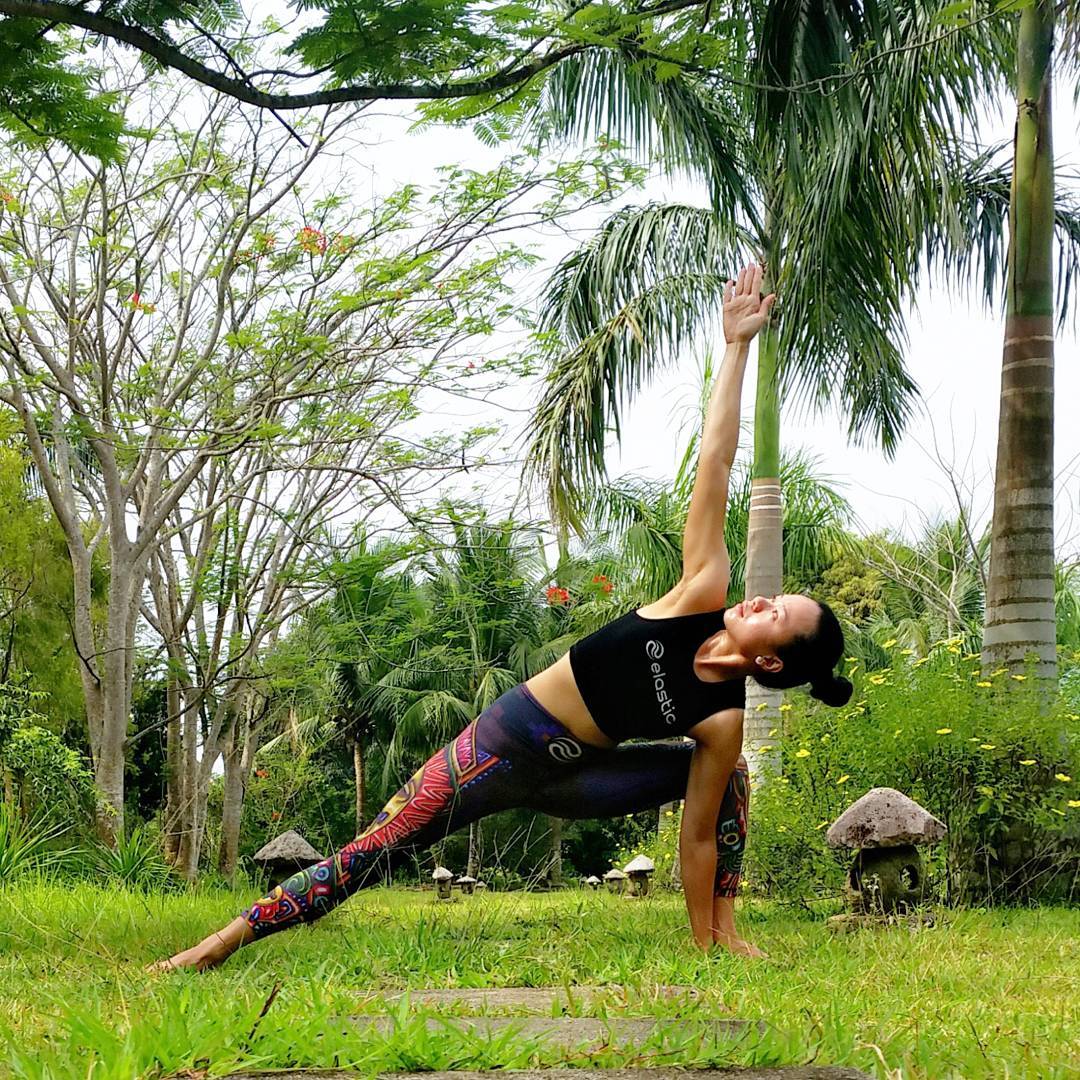
Methods Of Doing The Utthita Parsvakonasana:
The method of doing Utthita Parsvakonasana is very easy. So, see below the steps to do this yoga asana.
Step 1:
At the first step stand in Tadasana or Mountain Pose.
Step 2:
While inhaling take your feet around 4 to 4.5 ft. away from each other.
Step 3:
Turn your left foot at a 10° to 20° angle, and turn your right foot back to a 90° angle. Align your right heel with your left heel.
Step 4:
Slowly raise your hands until the hands are straitened in your shoulder blades. The right palm should be on the floor or on the ankles, according to your ability.
Step 5:
Keep in mind that while doing so, keep your torso and right leg in one direction. Keep your left ankle firmly on the ground and bend your right knee until the knee comes straight above the ankle.
Step 6:
If you have such flexibility, then place your right thigh parallel to the floor. Turn your left hip slightly to the right side. Take care that you turn from your hip joints and not from your back joints.
Step 7:
Raise your left arm towards the ceiling and forward by the side of your left ear. Finally, your left hand and leg should be in a straight line.
Step 8:
Now lift your head upwards so that you can see your left fingertips. Stay in the asana for 30 to 60 seconds.
Step 9:
Gradually, such as strength and flexibility in your body, you can increase the time, however, do not exceed 90 seconds.
Step 10:
Straighten the head to get out of the asana, lower the left hand down, straighten the torso back, and take the legs back in.
After practicing it on the right side of the body, turn your left and repeat all the steps on the left side of your body too.
Beginner’s Tips:
- If you have trouble keeping yourself or going to the bottom, then you can take support of a block.
- Choose the height of the block according to your comfort
- If you do not have a yoga block, you can use any other item on which you can rest your hand and it can bear your weight.
Follow-up Poses of Utthita Parsvakonasana:
You can practice these Asanas after the Utthita Parsvakonasana or the Extended Side Angle Pose:
- Parivrtta Parsvakonasana or Revolved Side Angle Pose
- Ardha Baddha Padmottanasana or Half Bound Lotus Standing Forward Bend
- Bakasana or the Crow Pose
- Prasarita Padottanasana or Wide-Legged Forward Bend
- Utthita Hasta Padangusthasana or Extended Hand-To-Big-Toe Pose
- Parsvottanasana or Intense Side Stretch Pose
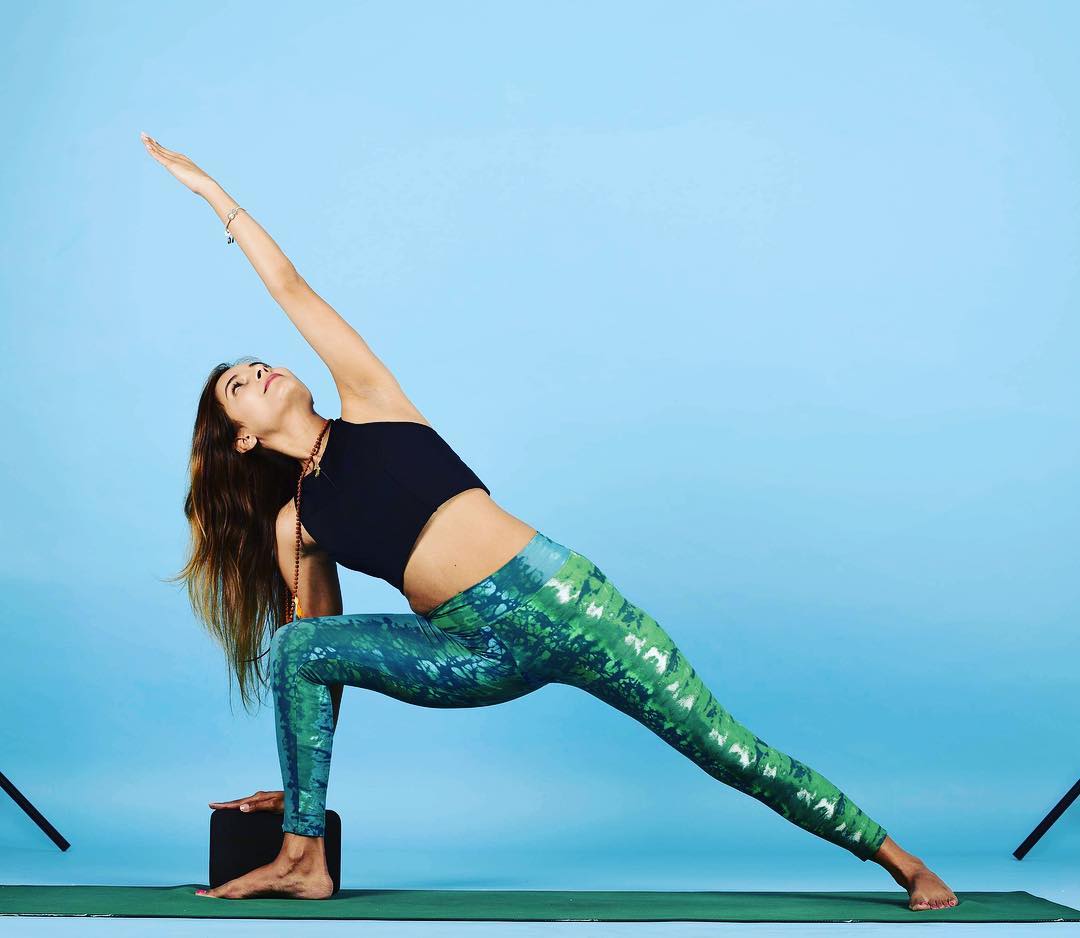
Precautions To Utthita Parsvakonasana:
- If you are suffering from high Blood Pressure then instead of lifting your head upwards in the last step, keep the head down so that your vision is on your toes.
- Those who have insomnia, headache, or low blood pressure, should not practice the Extended Side Angle Pose
- If there is a pain in your neck, keep the head straight instead of keeping it upwards in the last so that you do not stress your neck
- Do not put too much emphasis on your physical capacity
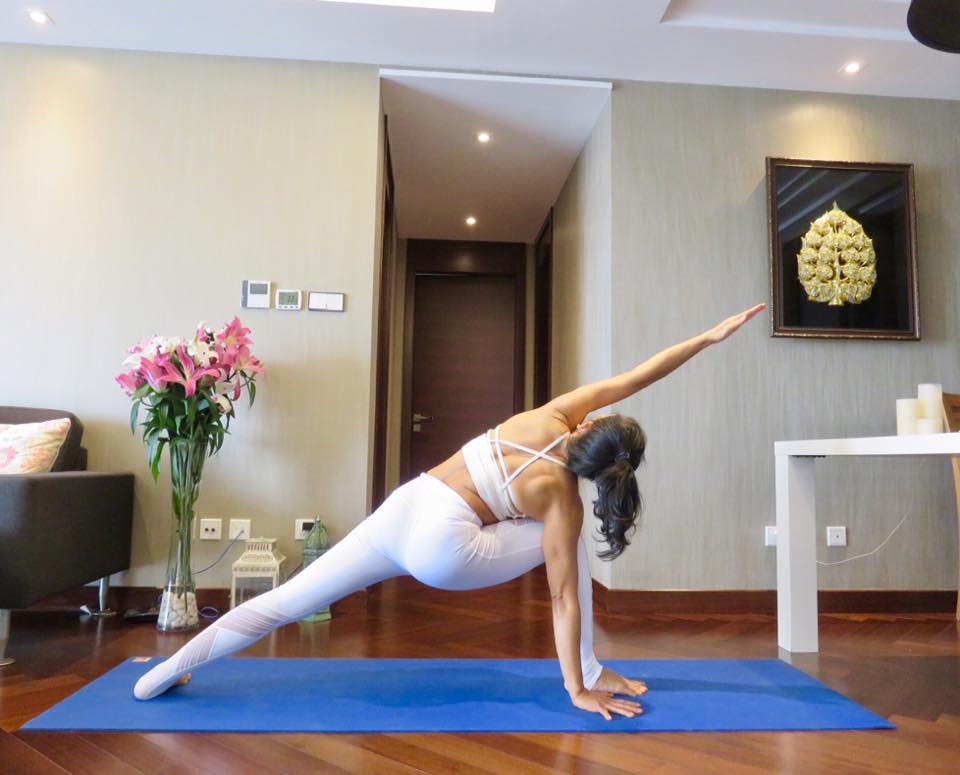
Benefits Of Utthita Parsvakonasana:
There are many benefits of Utthita Parsvakonasana. See the benefits below the benefits of this yoga asana…
Makes Legs Strong:
This yoga pays special attention to the feet. Creating a strong arch during the practice of Tadasana can help strengthen the feet of those who have flat feet. Even among people with normal feet, you will wonder how strengthening the legs in almost all situations allows you to move more smoothly. But you need to follow proper precautions and steps for that.
Increases Blood Flow:
If this yoga is performed correctly, articulating all muscle groups of the body and engaging without tension. It brings blood to each of these areas, which improves the efficiency of cellular function as well as removing toxins from the body. Although this process is subtle, learning to stand like this in daily life will strengthen and improve the function of our cardiovascular system.
Balance The Body:
Our physical and mental health is affected by the way we sit, stand, and work again. When we hold the bodyweight more than one leg or connect the muscles on one side of the body more than the other, we create patterns that can eventually cause long-term dysfunction. Tadasana helps us to be sensitive to these imbalances and ultimately correct them.
Reduce Back Pain:
Learning to align the waist of our pelvis and shoulders brings intelligence, awareness, and mobility to the muscles that maintain the position of our spine. Exercise this yoga can help us move in ways that limit stress on the back and distribute the load evenly throughout the body when lifting objects or participating in strenuous activities.
Strengthen Muscles:
Performing this yoga asana stretches the muscles of the feet with the hands. This makes the muscles not only flexible but also delicate. At the same time, due to this, there is no problem with back strain as well as muscle tension. Regular practice of this yoga pose also makes the spine flexible.
Improves Digestion:
Poor digestion can be corrected by adopting Padahastasana. By doing this yoga and asana, our digestive system works smoothly. Irritable Bowel Syndrome, or intestinal problems, and gastric problems can be overcome. Along with this, stomach, intestine, liver-related troubles can also be avoided.
Therapeutic For Carpal Tunnel Syndrome:
Carpal tunnel syndrome is currently a common disease. Which is seen in many people. If the disease is not investigated in a timely manner, the patient’s condition may become more serious. This yoga asana helps to treat this disease.
Improve Blood Circulation:
Whenever we perform this yoga asana, blood circulation occurs smoothly in our body due to the movement of hands and feet. Blood flow is good especially in the upper part of the body. By doing this, blood flow in the nervous and argon of the body is good. This is the reason why a person stays healthy by doing this yoga.
Reduce Stress:
If a person performs this yoga for just thirty seconds, then the person feels refreshed. By doing Yogasan, the person does not get tired of being relaxed and he is always full of energy. In such a person can live a happy life.
Makes Liver Strong:
By doing this yoga, the spline and liver of a person work smoothly. On the other hand, those who do it regularly get relief from diseases like thrombocytopenia, liver adenoma.
Therefore, it is important to practice this yoga routine regularly to get rid of spleen and liver disease. It also helps to cure abdominal hernias.
Helps To Live Healthy And Young:
Performing this yoga can always be healthy with one’s youth. By doing this, we can stay mentally healthy as well as physically healthy. Also, the person can come in the perfect shape.
Controls Bloods Pressure:
Helps To Increase Height:
This yoga asana is considered to be one of the most effective yogas of height or height. But it is difficult to get benefits by doing just a few days. Therefore, do this Yogasana daily.
Reduces High Heart Rate:
Utthita Parsvakonasana strengthens the cardiovascular respiratory system. By doing yoga, our heart ie heart remains healthy. You already know that our life revolves around our heart. If the heart suffers from some disease, then there is trouble. To keep the heart always healthy, you should do this yoga.
Improve Concentration:
Regular practice of this yoga increases the concentration and stability of the mind. this yoga helps in achieving stability of mind and controls mental agitations.
Helps To Control Physical Systems:
The daily practice of this yoga leads to the control of the physical system, the stability of mental tendencies, and a deeper feeling of mind and body. It leads a person towards intuition.
Improves Immunity:
Frustration and fatigue in the mind are the cause of disease in the body. Yoga asanas keep the organs in normal condition and give strength to the muscles. By doing yoga regularly, our immunity keeps getting better. People who keep falling prey to diseases very quickly, have to constantly struggle to stay healthy. Those people can lead a healthy life by adopting yoga.
Controls Appetite:
There are many yoga asanas that not only work to reduce the fat stored in the body, but also work to control your appetite. Because these yoga asanas work to increase your stamina.
Improves Mental Health:
As we told you above that the benefits of yoga are not only available to the body but also to your mind equally. Yes, yoga is the best way to reduce stress. Doing yoga reduces the secretion of a hormone called cortisol in your body.
Controls Hormones:
This hormone works to increase our stress. Due to its reduction, our stress also decreases. To reduce stress, you should do Janushirshasan, Sukhasana, Uttanasana, Shavasana, and Balasan. In a few days, you will get to see the benefit, your mind will start being happy.
Improve Sleep:
If a person gets good and complete sleep, then more than half of the diseases stay away from him in the same way. Both the body and the mind need adequate and deep sleep to recover or remain healthy. For good sleep, you should resort to Shavasana, Uttanasana, and Balasana. Your sleep will definitely improve in a few days.
FAQ:
Q. What are the benefits of Parsvakonasana?
A. There are many benefits of doing Parsvakonasana. This yoga pose helps to strengthen the hips, hamstrings, and shoulders. The regular practice of this asana stretches your feet, knees, and ankles. To know more about the benefits of Parsvakonasana read this article.
Q. What does Utthita mean by Sanskrit?
A. The name Utthita Parsvakonasana comes from the Sanskrit language. The First word is “Uthita (उत्थित)”, means “extended”.

